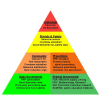Reducing Fatal Opioid Overdose: Prevention, Treatment and Harm Reduction Strategies
- PMID: 26339206
- PMCID: PMC4553643
Reducing Fatal Opioid Overdose: Prevention, Treatment and Harm Reduction Strategies
Abstract
The opioid overdose epidemic is a major threat to the public's health, resulting in the development and implementation of a variety of strategies to reduce fatal overdose. Many strategies are focused on primary prevention and increased access to effective treatment, although the past decade has seen an exponential increase in harm reduction initiatives. To maximize identification of opportunities for intervention, initiatives focusing on prevention, access to effective treatment, and harm reduction are examined independently, although considerable overlap exists. Particular attention is given to harm reduction approaches, as increased public and political will have facilitated widespread implementation of several initiatives, including increased distribution of naloxone and policy changes designed to increase bystander assistance during a witnessed overdose.
Keywords: harm reduction; naloxone; opioid overdose; overdose; prescription drug abuse.
Figures




References
-
- Jones CM, Mack KA, Paulozzi LJ. Pharmaceutical overdose deaths, United States, 2010. JAMA. 2013;309(7):657–659. - PubMed
-
- Opioids drive continued increase in drug overdose deaths. CDC [Internet] [cited 2015 Mar 5]. Available from: http://www.cdc.gov/media/releases/2013/p0220_drug_overdose_deaths.html .
-
- Volkow ND. Prescription Opioid and Heroin Abuse. National Institute on Drug Abuse [Internet] 2014. Available from: http://www.drugabuse.gov/about-nida/legislative-activities/testimony-to-... .
-
- Field G. White House Czar Calls for End to “War on Drugs”. Wall Street Journal [Internet] 2009. May 14, Available from: http://www.wsj.com/articles/SB124225891527617397 .
-
- Opioid Overdose Prevention Programs Providing Naloxone to Laypersons -- United States, 2014. CDC [Internet] [cited 2015 Jun 25]. Available from: http://www.cdc.gov/mmwr/preview/mmwrhtml/mm6423a2.htm . - PMC - PubMed
Publication types
MeSH terms
Substances
Grants and funding
LinkOut - more resources
Full Text Sources
Other Literature Sources
Medical
Miscellaneous
